Our favorite boondocking campsite is just off the road among the trees with a little babbling brook running alongside. We simply step out of our door high up in the Jefferson National Forest, and dip our kettle into the clear running stream for our morning’s coffee. But is that safe? It’s a common question RVers and campers have. Because the truth is that not everyone knows how to treat river water.
While we all love getting outdoors, the reality is that our supplies dictate our stay in any given play. And fresh water is near the top of any supply list. How much you have will ultimately limit your stay at any beautiful place — no matter your RV’s holding tank capacity. Since most American use an average of 82 gallons of freshwater per day, business as usual ain’t gonna cut it!
Of course, conserving water helps. But having ways to treat river water and other sources to replenish you freshwater supply? That will enable you to enjoy your location far longer.
Why You Need to Treat River Water?
We’re visual creatures, so don’t feel bad if you’ve looked a stream, lake, or pond then said (or thought), “This water looks so clear … I wonder if I could drink it.” Deep down though, you probably know you shouldn’t go for the chug-a-lug. Any freshwater source found in the wild is also used by wildlife. Mammals, including people, can carry bacteria in their GI tract that can make us sick. Since their waste finds its way into the water source, single-celled organisms — like Giardia — and viruses can be found in even the clearest sources.
Which means you to treat it before you drink it. And if you don’t know how, you can learn any one of the following ways to naturally replenish your freshwater supply.
Ways to Treat Freshwater
Boil It
How it works: Most folks know this one. And it works. Heat will kill any bacteria, protozoa, or viruses in the water. Just ensure that it comes to a rolling boil. Any heat source can do the job, stove, campfire, or even a candle under a tin can.
- Upside: lightweight, mobile and a two-in-one for hot drinks.
- Downside: requires time, fuel, and won’t remove sediment.
Treat It With Chemicals
How it works: Iodine and chlorine tablets or drops can treat water while camping or at home. So long as your chemical supply is strong, you can use this method.
- Upside: lightweight, easy to measure in liter bottles.
- Downside: needs time to dissolve in the water, and diffuse throughout the liquid to be effective (usually 20-30 minutes); also, it can leave a bad taste.
Use a Filter
How it works: Filters can separate out most large, single-celled organisms, bacteria and protozoa — in addition to sediment. (The two previous methods don’t do that.) That makes filters a great way to get clean drinking water from a muddy source. Filters with an iodine screen will also kill the viruses that might pass through the filtration process.
- Upside: the best tasting option to remove harmful microbes and sediment.
- Downside: can be heavy, easily clogged, and difficult or time consuming for a larger group.
Employ Ultraviolet Light
How it works: First off, this is not just leaving the water in the sun. You’ll need a lightweight UV device that emits a light which you immerse into your water container for a specific length of time. The UV light kills the bacteria and viruses.
- Upside: easy to use, simple, and straightforward.
- Downside: can be expensive, requires batteries, and won’t remove sediment.
Let Gravity Do the Work
How it works: When tent camping in the backcountry or in our RV, we most often use a simple in-line filter for treating water. We even made a gravity filter with the following that can do the work while we do something else.
- 2 containers to hold water
- 1 inline filter
- 2 lengths of flexible tubing
First, fill the first container with untreated water. Place it higher (rock, tree stump, picnic table) than the second, which will collect the treated water. Place the input tubing into the untreated water and create some suction on the output. Once the water is flowing, place the output tubing into the clean second container.
It helps if both tubes are already full of potable water to start the flow. This will create a siphon from the dirty water container which will flow through the filter and leave you with potable water on the other end, as described in this video.
Think About Site Selection
Move up the watershed whenever possible. This makes sense, right? The closer that you are to the source the more likely that the water will be cleaner and have less sediment. As an example, if you’re near a stream, see if there is a creek close by flowing into it? Likewise, if you’re on a lake, is there a stream coming into it? You get the idea. Point is that you want to get as close to the source as makes sense for your situation. Doing so will likely give you water that’s at a better starting point for purification.
Tip for Sediment Removal
Use a bucket to collect water and let it settle out overnight. Gently skim the cleaner water off the top. Try pouring the water through a bandanna, t-shirt, or clean pillowcase. To get a little more serious with seriously silty, muddy water, you can use a chemical water kit like Water Wizard that uses a polyaluminum-chloride solution, which binds with the sediment and helps it fall to the bottom. Once the sediment falls, the water above is more easily filtered or treated for drinking. We used this during our Grand Canyon rafting adventure, and it worked spectacularly!
When Do I Not Need to Treat Water?
Generally, if you’re washing dishes, yourself, or clothing, you don’t need to purify the water. Expecially if your water source is generally clean and not contaminated from recent flooding or heavy rain.
*****
We hope these tips allow you to stay for longer at your next boondocking site, and keep you camping instead of going in search of an RV refill station.Of course, which method is best for you depends upon how you’re camping and what you want to carry in your RV. Personally, we like to bring iodine tabs in our small first aid kit that we take everywhere. The tiny bottle will last for years as a backup method, even if we bring along a pump filter. But that’s what works for us. Your preferred method to treat river water may be different.
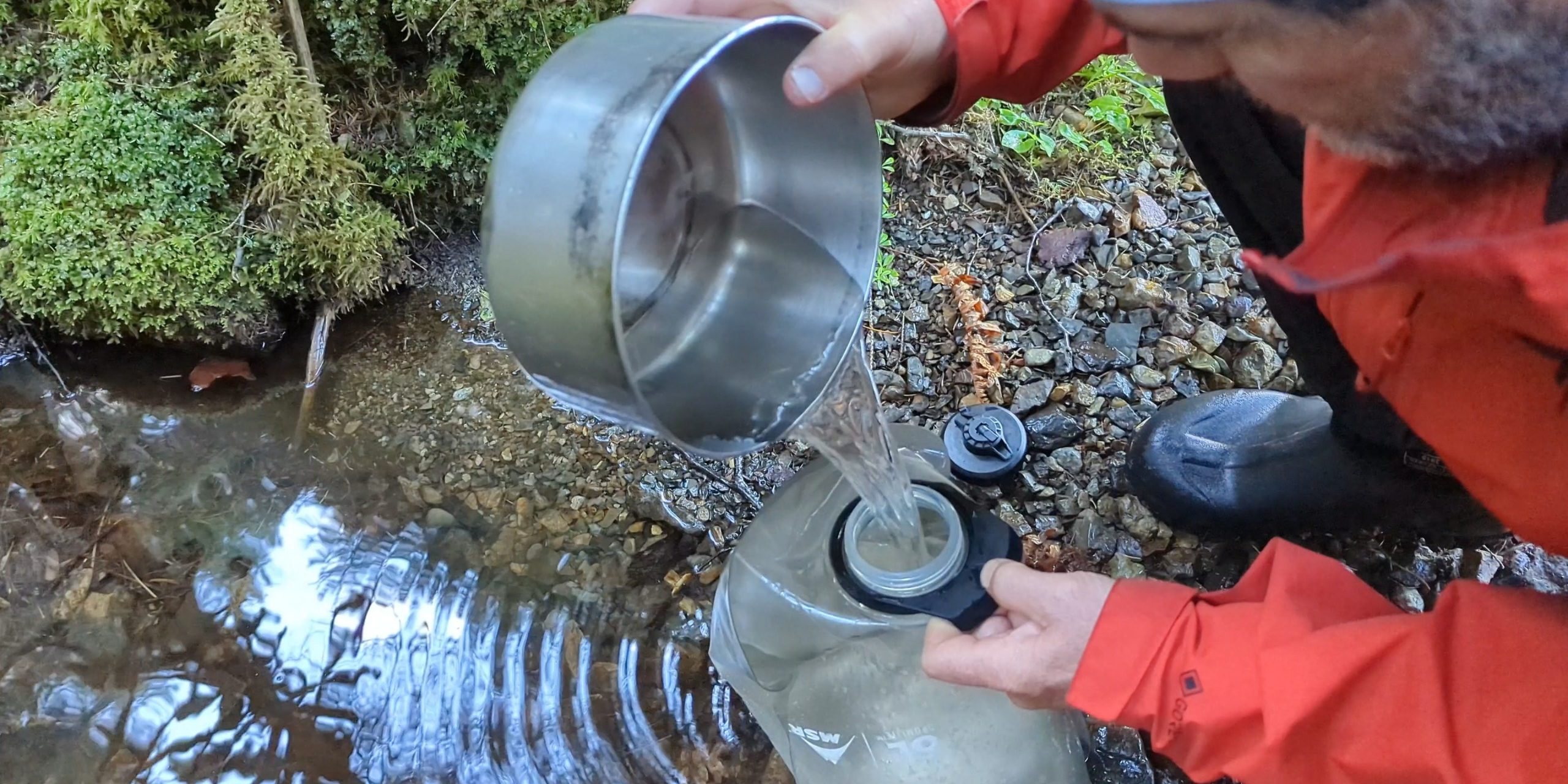
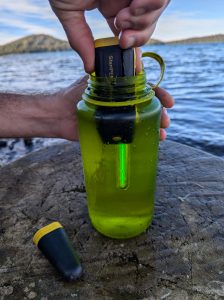
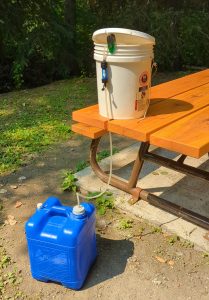
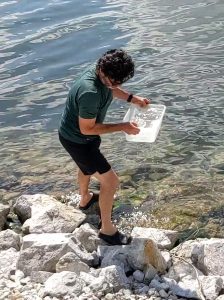
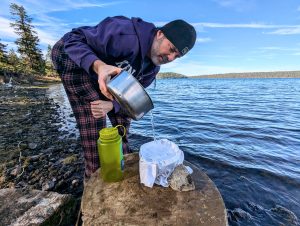
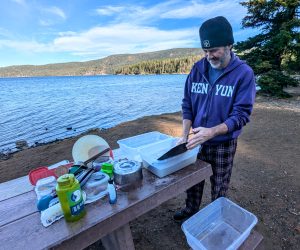
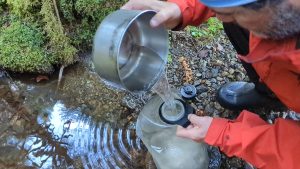
Leave a Reply